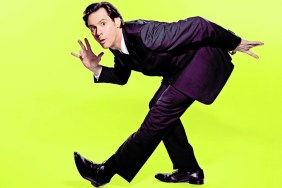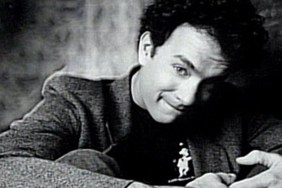
This May brings a remake of early 80s all-timer, Poltergeist, the latest in a long (long) line of cinematic reboots, retreads and more. By now, the ubiquity of reimaginings has rendered their existence less of a transgression than ever, with Poltergeist barely getting anyone up in arms. At the same time, the concept of remakes is an ever-hot point of contention among genre fans. Refusing to indulge in broad dismissaland maybe in a bit of cautious optimismwell spend this May looking at, and defending, some of the better redos in horror cinema.
In the overcrowded and largely derided horror remake canon, Tom Savinis Night of the Living Dead is an anomaly: a remake made for a totally justifiable reason. Typically, genre fans are quick to lambast Horror Reboot No. Weve-Lost-Count and mourn the perceived death of originality and creativity, but with Savinis Night of the Living Dead, released in October of 1990, only the ultra-cynical horror lovers can truly decry its existence. The rest of us horror die-hards, meanwhile, cant knock the original Nights team (director George A. Romero, writer John A. Russo and producer Russell Streiner) for reimagining their seminal 1968 masterwork of zombie cinema. They were just trying to finally make the hard-earned bucks theyd so rightfully deserved yet could never obtain for over 20 years.
The story is tragic legend within horror lore. Romeros black-and-white Night of the Living Dead was originally titled Night of the Flesh Eaters, but that name already existed, prompting Romero, Russo and company to switch the titles end portion to Living Dead. But when their little self-made, $114,000 film was released theatrically and became a midnight movie sensation, none of the filmmakers saw any real profits. It was a tough lesson learned by Romero and his partners, who, between them all, barely had enough film business experience to fill a How to Not Lose Out on Millions of Dollars self-help books prologue. Continental Distributing, the Walter Reade Theaters distribution arm, had sent out Night of the Living Deads prints without any copyright notices. So like a bankrupt virus, the films many prints began circulating around the country and were endlessly duplicated. Night of the Living Dead became horrors early answer to the Bébés Kids mantra of, We dont die, we multiply! And Romero, Russo, Streiner and everyone else involved with Night of the Living Dead continued to figuratively kick themselves in their asses for the next two decades.
If youre a fan of Romeros films, or even just a Night of the Living Dead loyalist, the fact that Pittsburghs cinematic pride-and-joy and his colleagues had been so financially screwed over should both infuriate you and leave you wanting them to cash out. Which is why, whether youve seen it or not, Night of the Living Dead 90 is a tough remake to hate. Its redemption exemplified. The whole Night 68 brain-trust reunited for it, with Romero writing the script, Russo and Streiner producing, and longtime Romero friendand the twisted makeup effects mastermind behind Romeros Dawn of the Dead, Day of the Dead and CreepshowTom Savini stepping behind the camera for the first time in his long, illustrious career. Its as pure of a revision as one could ask for, a near gangs-all-here replication of the 1968 production.

Dont trust any reviews of Savinis Night of the Living Dead that label it as a lazy shot-for-shot remake or an uninspired carbon copy of its predecessor. You can call it a cash-grab, of course, since its makers have made no mystery about its dollar-sign-driven origins. But, again, who can blame them for that? And thankfully, they loved their 1968-born baby too much to do what many would eventually do with horror staples. The critics whove dubbed Night of the Living Dead 90 as anything less than a first-class zombie movie/inventive remake either didnt pay attention to the movie while watching it or, god forbid, havent actually seen Romeros Night, and, thus, dont have a clue what theyre talking about. They pulled a Rex Reed reviewing V/H/S/2 blunder decades before the New York Observers maestro of hack criticisms July 2013 folly.
The pleasure in watching the Night of the Living Dead remake comes from Savini and companys tireless excitement in upending the original movies fans expectations. They wisely didnt try to recapture Romeros films thematic weight and dramatic elegance. Released at the height of the Civil Rights Movement, and fueled by its black lead actor, not-so-subtle lynching imagery and aggressive counter-culture-devouring-the-status-quo subtext, Romeros film bravely and expertly tapped into that societys uneaseit made them confront harsh realities while soiling their undergarments and wincing at staged cannibalism. For the remake, Savini knew how disastrous itd be to attempt to modernize Nights headline-conscious spirit, so he focused on making his Night less in-your-face and grim and more loosely entertaining.
The only identical aspects shared between the movies are their characters (both films use the same names and physical looks) and set-up. In both, seven people are trapped inside of a farmhouse, having barricaded themselves in by nailing wooden boards over the windows, as a growing horde of zombies surrounds the property; personalities clash, terrible decisions are made and, as the night progresses, their body-count decreases significantly. Yet thats where the similarities end.
Savinis Night of the Living Dead is unabashedly dedicated to audience manipulation. He makes that much clear from jump. The openings the same, with mousy Barbara (Patricia Tallman) and her obnoxious brother, Johnny (Bill Moseley), visiting their late mothers grave and being interrupted by a staggering man in a black suit. In Romeros film, that man is the inaugural zombie and an iconic horror figure; in Savinis, however, hes a misdirection. The staggering man apologies for bothering the siblings and walks away, but stays in the frame long enough for the audience to see him turn around and make viewers think, Okay, now hes going to attack them! And then, wham, a hideous, lesion-covered zombie barrels into the shots foreground, tackles Barbara, and the horror begins.

The first time you see it, Savinis Nights opening sequence is a real jolt. Its so unexpected that you even overlook how its kind of idiotic. Lapses in logic are easily forgivable, of course, when the filmmakers execution is joyously enthusiastic and knowingly calculatedthats Evil Dead-era Sam Raimi 101. And like Raimi, Savini and Romero are clearly having loads of fun. The madcap energy in Savinis opener is undeniable, and it crescendos into the darkly comedic entrance of a second zombie whos nearly buck-naked and sports a vicious autopsy scar down its back. Romeros films graveyard zombie looks like a stuffed-shirt accountant whos wearing layers of his wifes face makeup and stumbles around like hes trying not to wake her up after a night of drinking with co-workers; Savinis pair of ghouls, on the other hand, snarl and grab as if theyre fighting their way to the front of an open bar. Whereas Bill Hinzmans was a funeral, their Night is a party. Why else do you think the second zombies rocking his birthday suit?
By completely perverting Nights beginning, Savini also conditions you to anticipate anything and everything. Its the foreplay before the films myriad climaxes. Instead of a helpless and essentially catatonic non-participant, Barbaras turned into a tough, Ripley-esque heroine; no longer a borderline bigot, Harry (Tom Towles) is merely a slick-tongued yet slang-deficient asshole who insults people by calling them lame-brains and yo-yos. That mangled corpse at the top of the staircase is now joined by an inexplicably moving severed hand and an obese ghoul who topples over the railing as if theres a Free Intestines buffet waiting below.
The most fascinating tweak is Savinis handling of the original films classic matricide scene, in which zombified youngster Karen opts to slaughter her mother, Helen, with a trough over simply eating her alive. Savini downplays that brutal and horrifically shocking kill to an off-screen biting of Helens neck and a blink-and-youll-miss-it spray of blood on a wall-bound trough. Its his way of cleverly betraying his audiences trust. If youre watching a Night of the Living Dead remake after youve seen Romero and Savinis wickedly extreme gore in films like Dawn of the Dead and Day of the Dead, youre waiting for that trough moment to happen just to see Helens entrails spill out, but you dont get thatyou get Tom The King of Splatter Savini being frugal with the red stuff.

Its minimized gore notwithstanding, Savinis Night of the Living Dead actually isnt that much different from everyones favorite remake of a George Romero classic, Zack Snyders Dawn of the Dead. Both films take Romeros original conceit, strip it down to its essence, and then run wild all around its edges, and, to Savinis films slight detriment, neither one is particularly scary.
Nights lack of terror is directly connected to the new Barbara. Judith ODeas performance in Romeros film is somewhat comatose, but thats by designby witnessing her constantly petrified state, the audience has no choice but to acknowledge the films scariness. But Tallmans Barbara points out the storys obvious flaws, like how slow the zombies are and how effortlessly the living folks can maneuver around them towards safety if theyd just sack up already. Its tough be all that scared as a viewer if the main protagonist herself isnt.
And, in Savinis films defense, theres nothing wrong with that. Had filmmakers independent from Romeros original regime made this first Night of the Living Dead remake (sorry to remind you but, yes, Night of the Living Dead 3D really is a thing), its muted scares would be an issue, since newcomers daring to remix a gold horror standard better be able to maximize what made the previous film so effective. Romero, Russo and Streiner already gave audiences the willies back in 1968, thoughthis time, they just wanted to wild out. Night of the Living Deads originators treated the remake as a kind of funhouse ride for the fans whod kept them going when those non-existent royalty checks never did.
In a way, the filmmakers who never got paid were paying it forward.
—
Matt Barone is a film-obsessed writer and editor of TribecaFilm.com. When hes not contributing to outlets like The Dissolve and Birth.Movies.Death, he endlessly weighs in on all things horror on Twitter.









